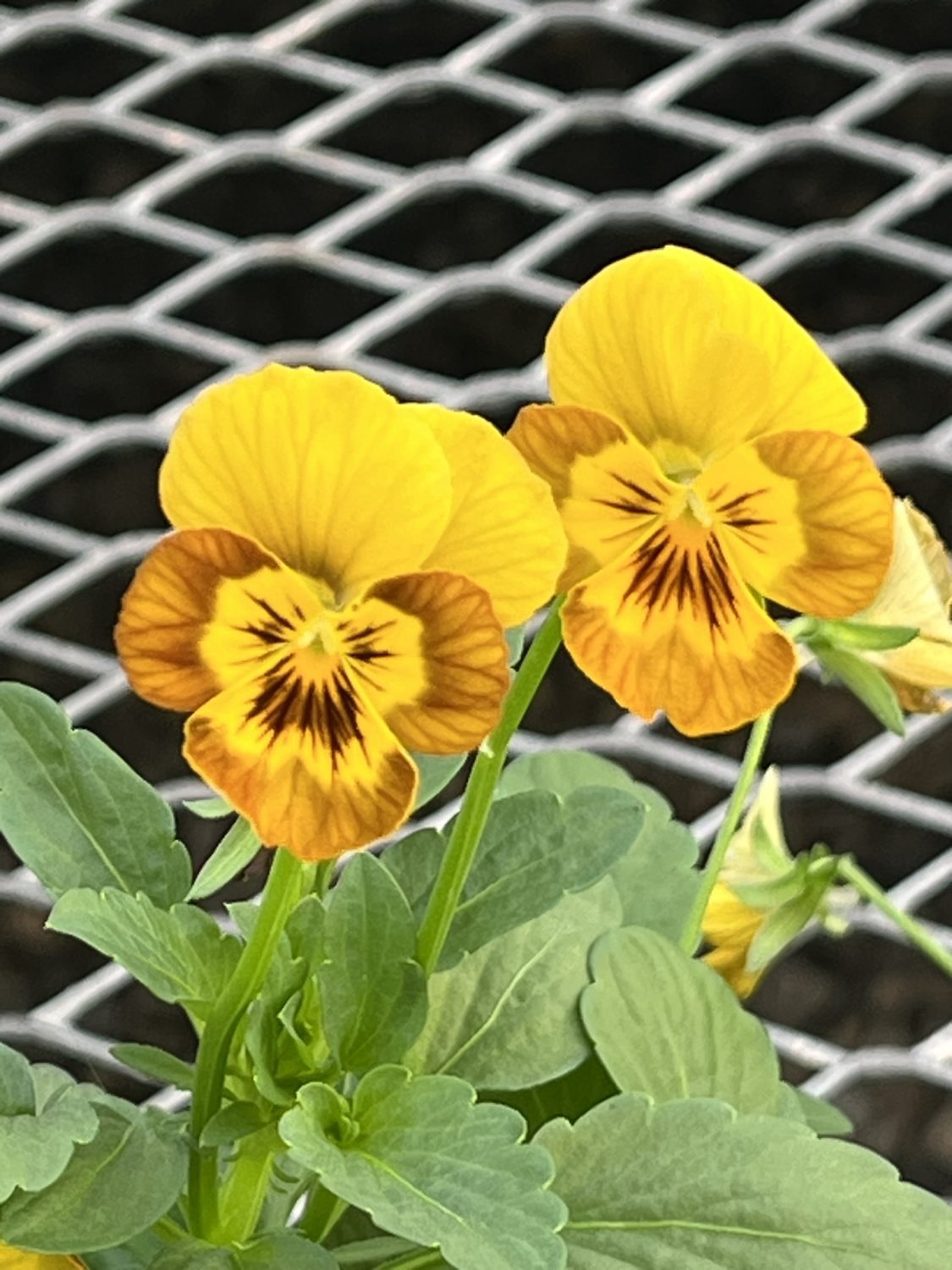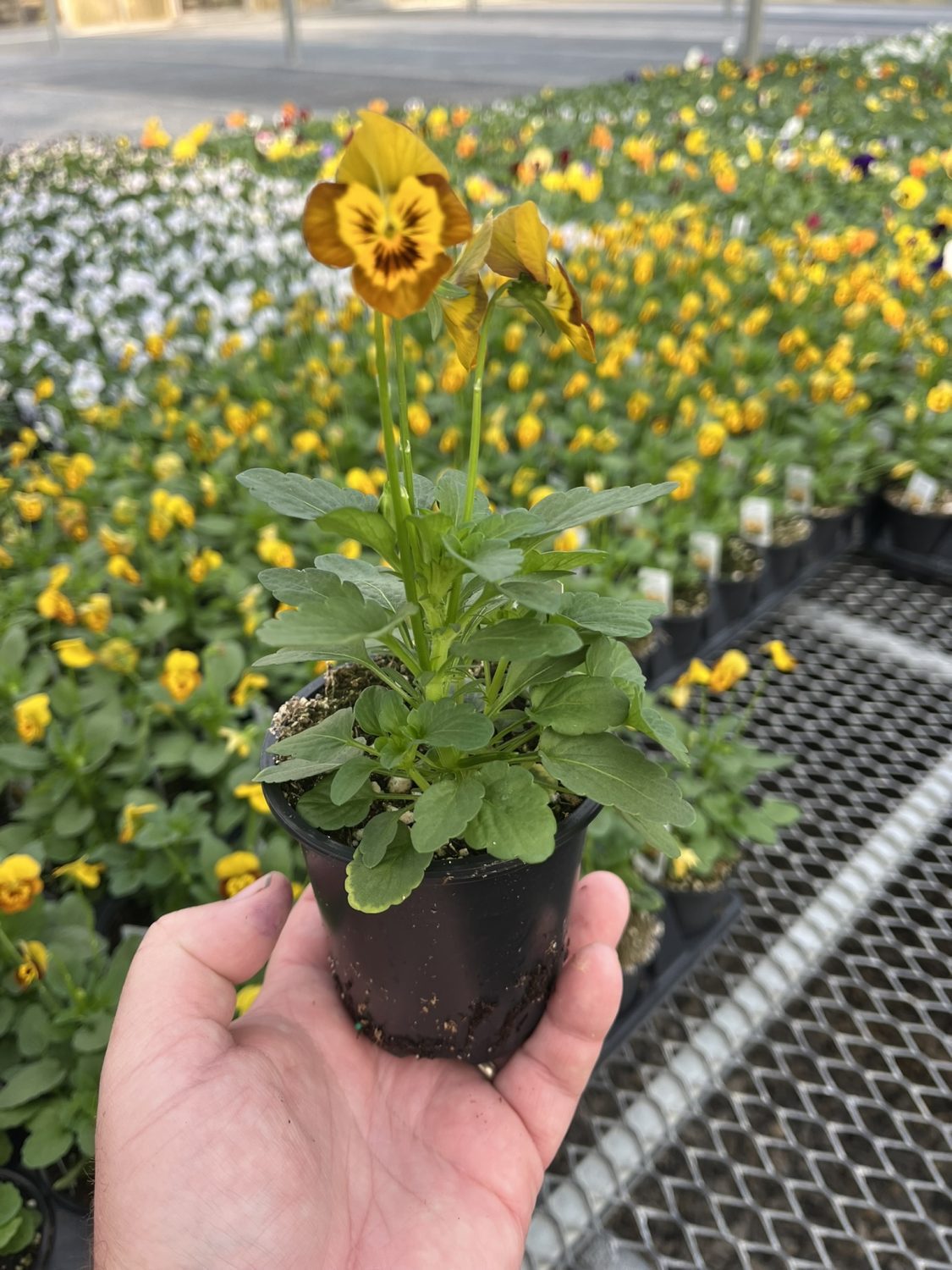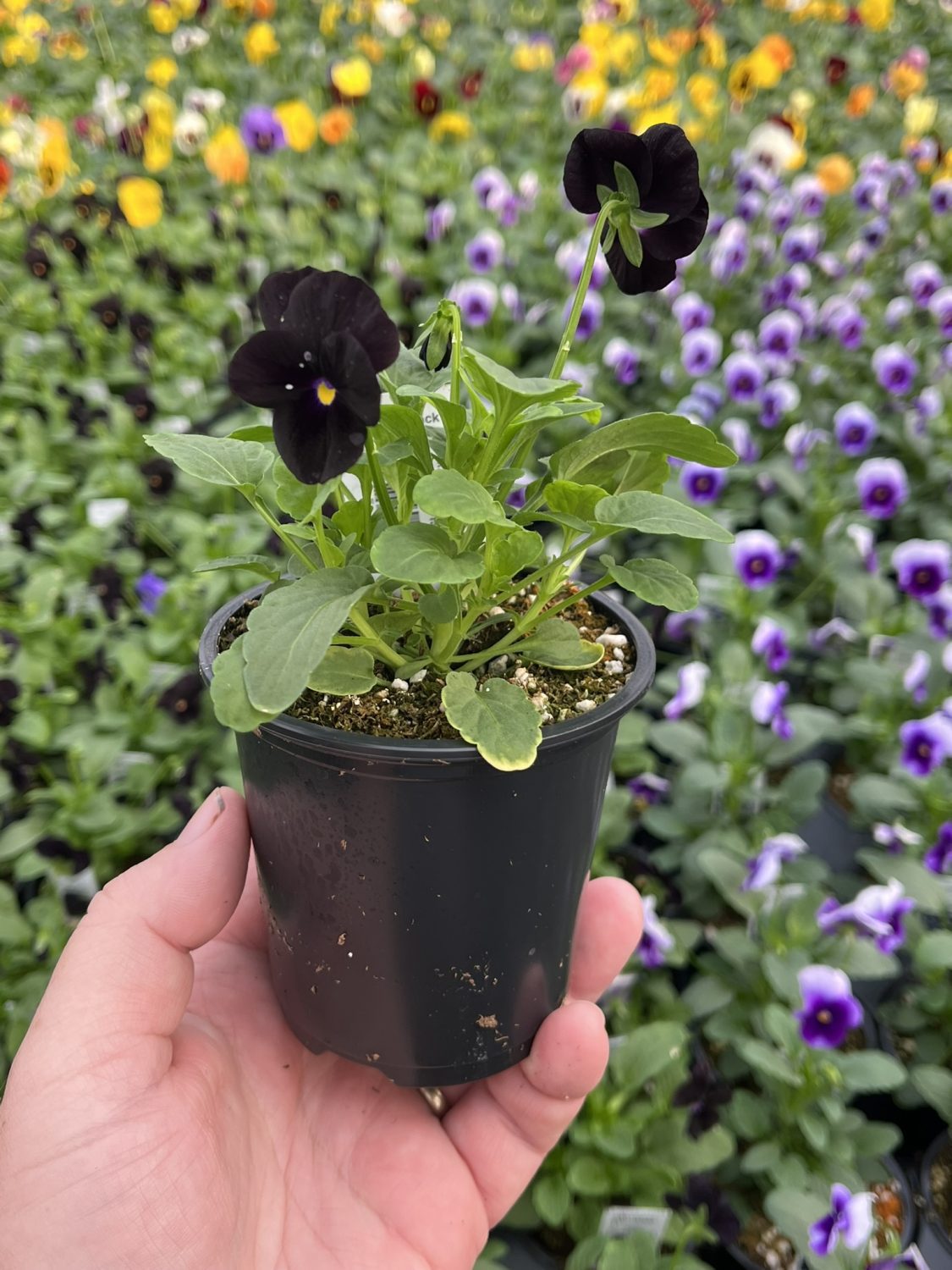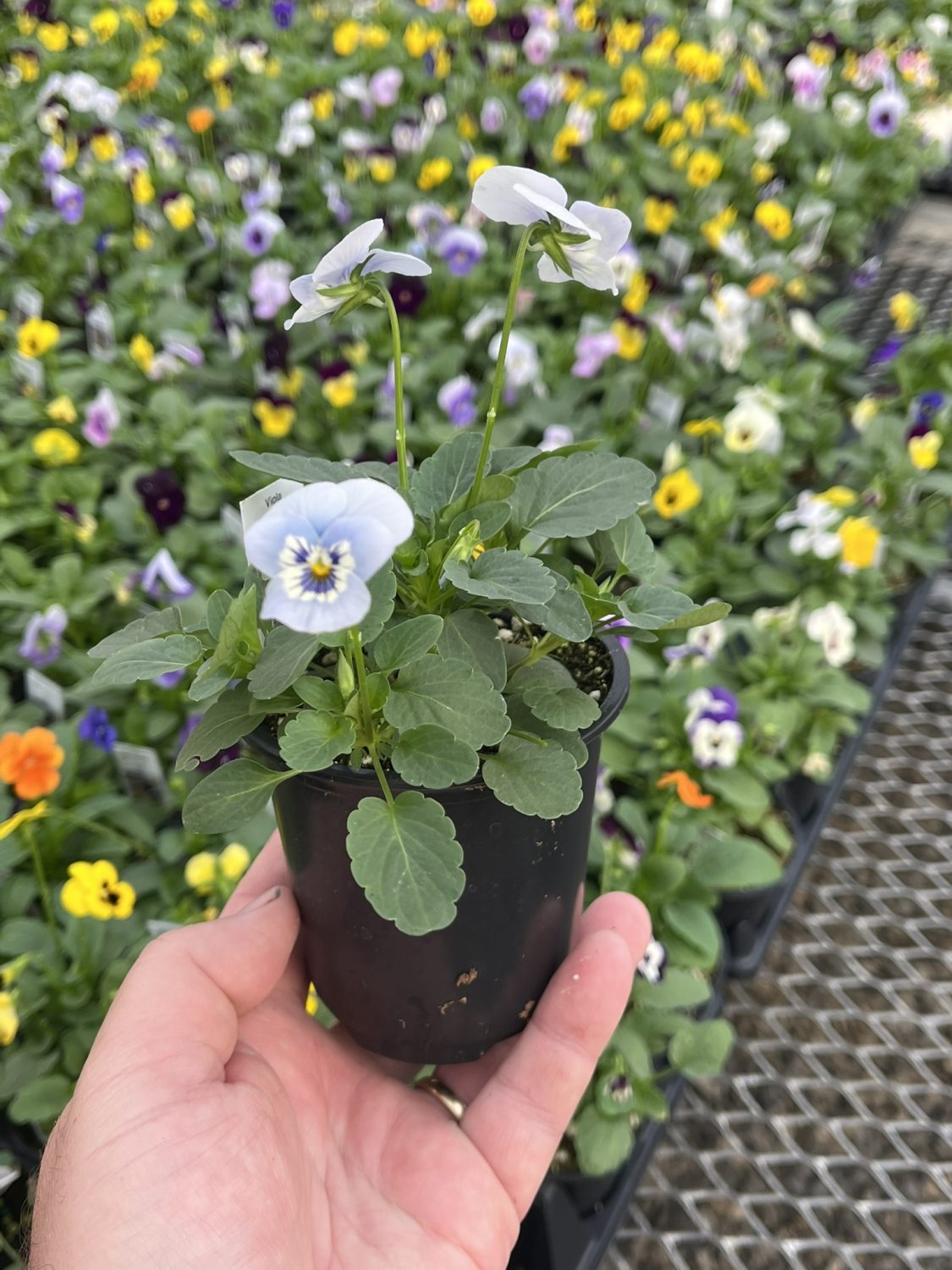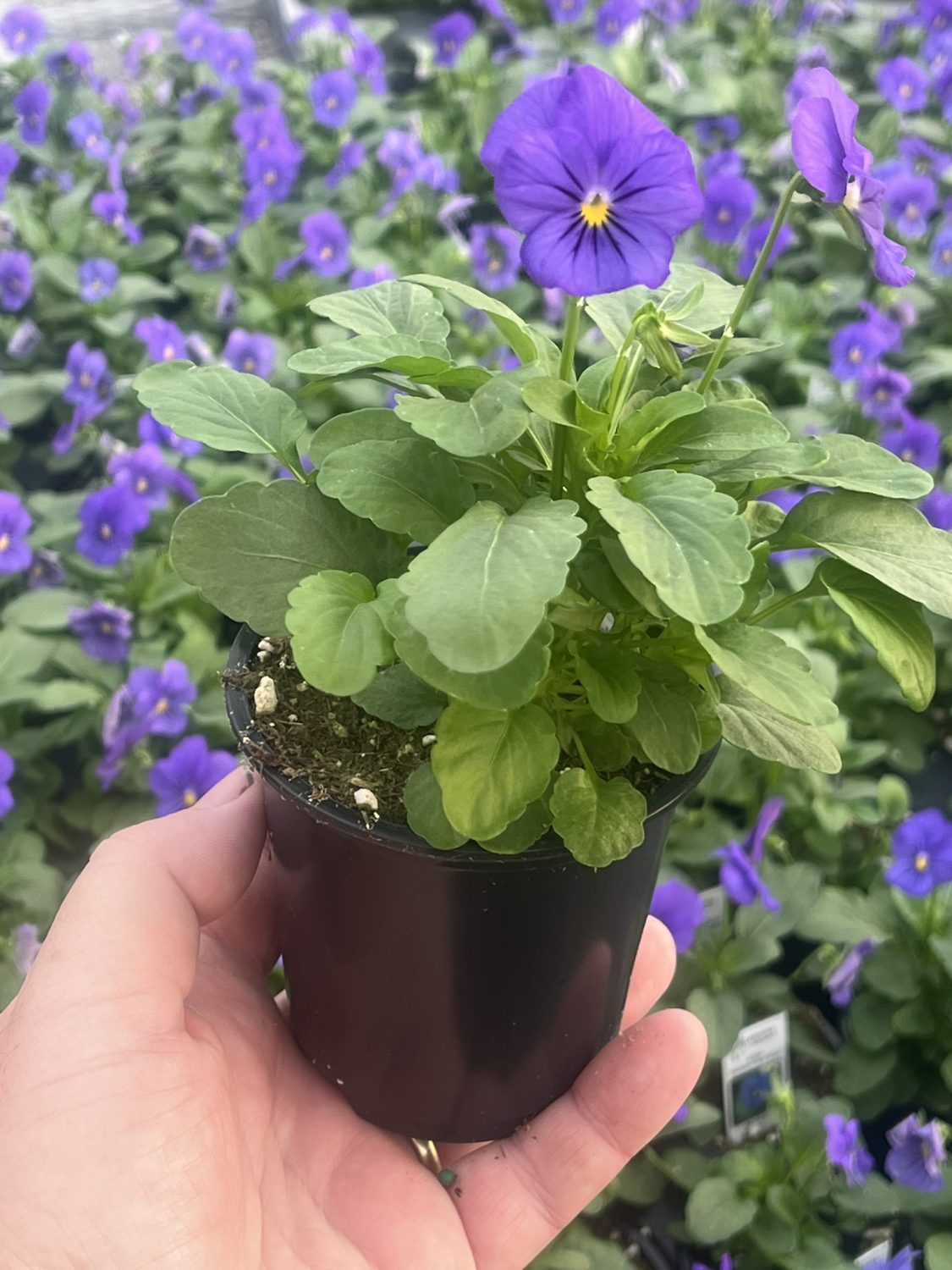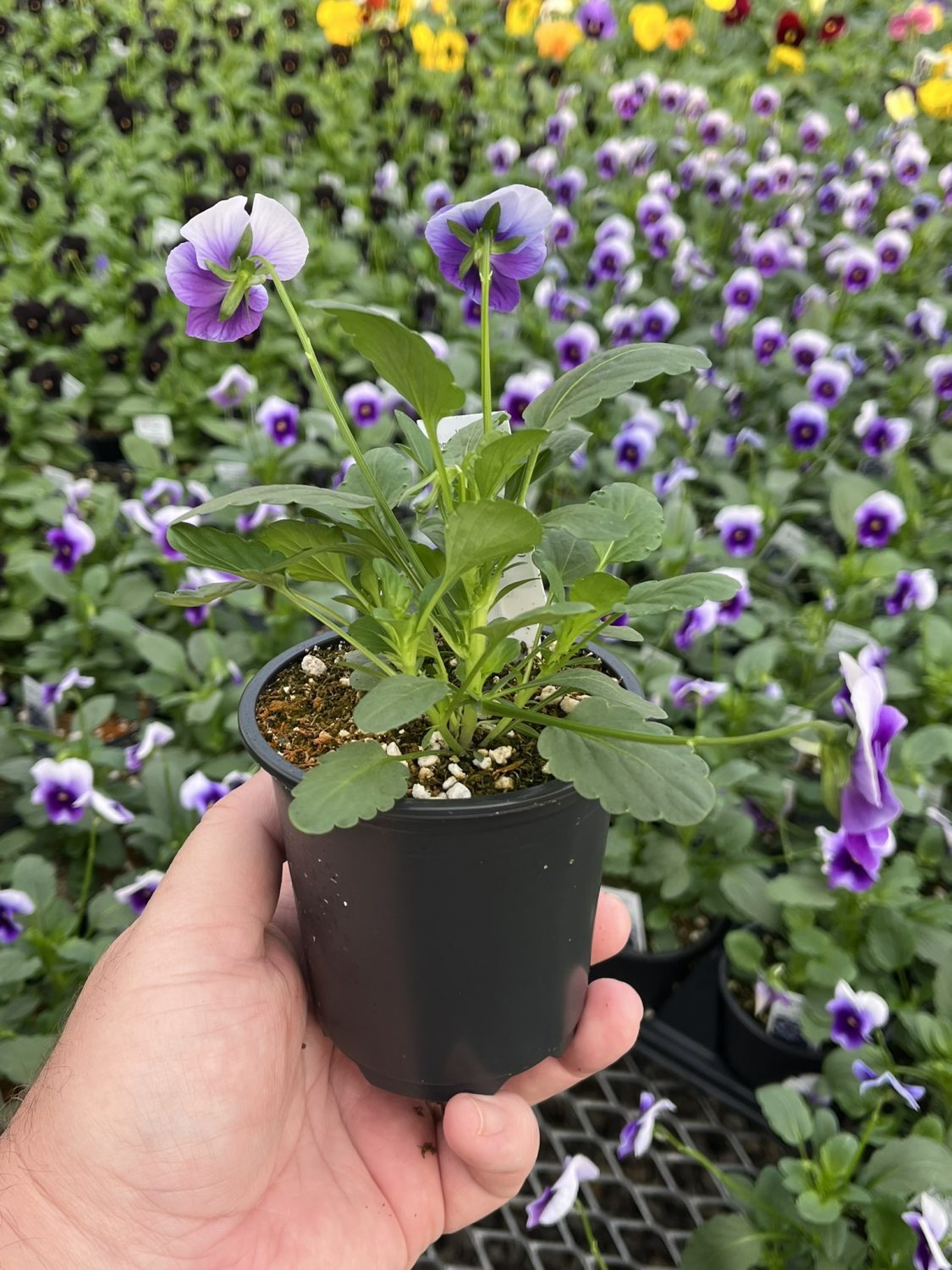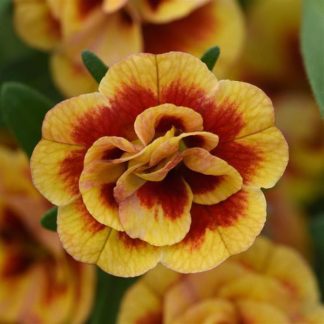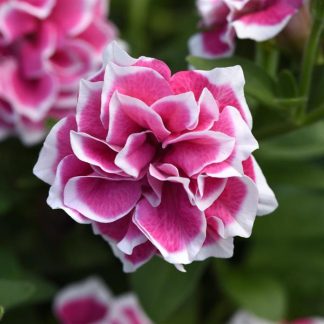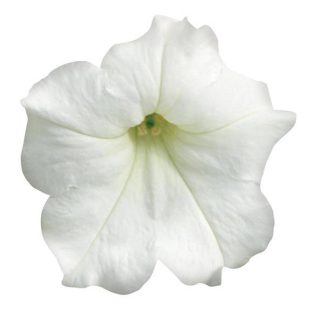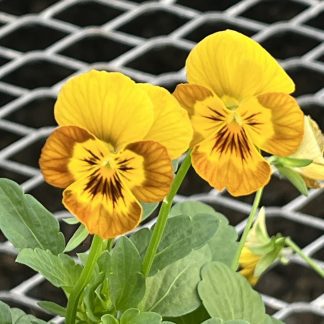Description
Viola ‘Honeybee’ — Sunny Blooms that Buzz with Cheer
Ready for color that looks like sunshine in a cup? Viola ‘Honeybee’ brings warm golden petals, sweet whiskers, and a lively glow that brightens beds, pots, and window boxes. The flowers resemble tiny faces dusted with pollen. They feel playful. They feel bright. But most of all, they feel happy—on crisp fall mornings and cool spring days alike.
In this deep-dive, we’ll show you why ‘Honeybee’ stands out, where it thrives, and how to keep it blooming for months. We keep the steps clear. We keep the tone friendly. And we focus on wins you can see.
Why We Love Viola ‘Honeybee’
- Golden, honey-toned blooms. Yellow petals with soft markings that read like little “bee” faces.
- Long cool-season color. Fall through spring in mild regions; spring into early summer in cooler zones.
- Compact, tidy habit. Neat mounds that look finished right away.
- Pollinator-friendly. Early nectar when the garden is waking up.
- Easy care. Simple steps, strong results.
In other words, ‘Honeybee’ is cheerful without being loud. It pairs with many colors. It brightens shade. It glows at dawn and dusk. We plant it once and enjoy it for months.
Plant Profile at a Glance
Type: Cool-season annual; short-lived perennial in very mild climates
Botanical group: Viola × wittrockiana / viola hybrid selection
Height: 6–8 inches
Spread: 8–10 inches
Habit: Low, mounded, and dense
Bloom time: Peak in cool weather; heaviest in early spring
Fragrance: Light, sweet on warm afternoons
Foliage: Soft green, rounded leaves that set off the golden petals
After more than a few weeks, the clumps knit into a carpet of color. The plants hold their shape in good light. They don’t sprawl. They just bloom.
Where ‘Honeybee’ Thrives
Light: Full sun to part shade. In warmer climates, choose morning sun with afternoon shade.
Soil: Loose, well-drained, rich in organic matter.
pH: Neutral to slightly acidic.
Water: Keep evenly moist, never soggy.
Violas love cool roots. A thin mulch—about one inch—keeps moisture in and weeds out. Instead of fighting dry soil, you set the stage for easy growth.
Best Planting Windows by Region
- Cool and cold zones (3–6): Plant in early spring as soon as soil can be worked. You can also plant early fall for late-fall color, protecting young plants from the first hard freeze.
- Moderate zones (6–8): Plant in fall for winter-to-spring bloom.
- Warm zones (8–10): Plant in fall for peak color through the coolest months.
If a hard freeze is forecast, cover new plantings with frost cloth at dusk and remove it in the morning. Simple protection. Big payoff.
Step-by-Step Planting
1) Prepare the bed.
Loosen the top 8–10 inches. Blend in compost for drainage and nutrition. Break clods so roots can move easily.
2) Space correctly.
Set plants 8–10 inches apart. They fill fast and form a plush, connected look.
3) Plant at the right depth.
Keep the crown level with the soil. Firm gently. Water to settle and remove air pockets.
4) Mulch lightly.
Add a thin mulch to steady moisture and keep the root zone cool.
5) First feeding.
Mix a slow-release, balanced fertilizer at planting. Little nutrition up front fuels steady growth and consistent bloom.
Care Made Easy
Watering
Aim for even moisture. Let the top inch of soil dry slightly between waterings. Containers dry faster than beds, so check with a fingertip each day.
Feeding
At planting, use a slow-release, balanced fertilizer. Through the season, add a light water-soluble feeding every 4–6 weeks. Little and often works best.
Deadheading
Pinch off spent flowers and seed pods. This keeps energy focused on new buds. Minutes of effort. Months of color.
Heat management
As spring warms, bloom may pause. Give afternoon shade and steady water. In many regions, fall plantings give the longest, strongest show.
What Makes ‘Honeybee’ Stand Out
Yellow flowers are common. ‘Honeybee’ feels special. The petals hold a warm, honey-gold tone, not a harsh neon yellow. Fine whiskers draw the eye to the center, like pollen guides for real bees. From a distance, the plants read as a soft glow. Up close, each bloom looks hand-painted. We love that it brightens gray days and balances bold partners without overpowering them.
Design Ideas You Can Steal Today
Sunny pathways
Line a front border with a single row of ‘Honeybee’. The tidy mounds frame the path like soft lights. It’s crisp in daylight and cozy at dusk.
Bee-bright contrast
Pair with deep purple pansies, cobalt lobelia, or Black Viola. The honey tone pops against dark companions. The look is modern and sharp.
Pastel harmony
Blend with blush dianthus, pale lavender, and white alyssum. The bed feels light and airy, perfect for cottage borders.
Underplant bulbs
Tuck ‘Honeybee’ around daffodils, grape hyacinths, and early tulips. After the bulbs fade, the violas keep the display fresh. No awkward gaps.
Statement containers
Use a charcoal, cream, or terra-cotta pot. Plant 3 ‘Honeybee’ starts in a 12-inch bowl with trailing ivy and a small grass. Instant curb appeal.
Companion Plants that Love the Same Conditions
- Spring bulbs: Daffodils, tulips, hyacinths, muscari
- Cool-season annuals: Pansies, snapdragons, nemesia, stock, sweet alyssum
- Edible accents: Curly parsley, chives, baby lettuce, kale (ornamental or edible)
- Foliage foils: Heuchera (lime or silver), dusty miller, lamb’s ear, blue fescue
These partners echo the cool-season rhythm and let ‘Honeybee’ shine.
Growing in Pots, Steps, and Railings
You don’t need a large bed to enjoy ‘Honeybee’. A porch step is enough.
- Choose a container with a drainage hole.
- Fill with high-quality potting mix.
- Plant 3 plants per 12-inch bowl for a full look.
- Water when the top inch feels dry.
- Rotate the pot weekly so all sides see the sun.
That’s it. Simple steps. Happy plants.
Edible Flower Note
Many gardeners use viola petals as edible garnishes. If you plan to use ‘Honeybee’ on cakes, salads, or drinks, grow in clean soil and avoid non-edible sprays. Rinse gently and use fresh. If you grow only for color, enjoy the glow and skip the plate.
Quick Answers to Common Questions
How much sun do we need?
Full sun in cool weather. Part shade as heat builds. Morning sun with afternoon shade is ideal in warm zones.
How often should we water?
Keep even moisture. Pots dry fast on bright or windy days—check daily with a fingertip.
Do we need to deadhead?
Yes. It keeps flowers coming and prevents seed set.
Will ‘Honeybee’ reseed?
Sometimes. If you leave pods to mature, you may see volunteers next season.
Are they deer resistant?
They’re not a top deer favorite, but hungry deer sample almost anything. Use covers or repellents if pressure is high.
Troubleshooting Made Simple
Leggy growth
Likely low light or warmth. Move to more sun or pinch lightly to shape.
Few flowers
Often due to heat, heavy nitrogen, or skipped deadheading. Add light shade, switch to balanced feeding, and remove spent blooms.
Yellow leaves
Usually soggy soil or poor drainage. Loosen the bed, improve drainage, and allow the top inch to dry slightly between waterings.
Aphids or mites
Rinse with a firm spray of water. Repeat in a few days. Keep plants unstressed with steady moisture and regular, light feeding.
How Many Plants to Order
- Edging: 3–4 plants per linear foot
- Mass bed: 5–7 plants per square yard
- Containers: 3 plants per 12-inch bowl; 5–6 for a 24-inch window box
This spacing creates the lush, carpeted look we all want. Instead of gaps, you get instant fullness.
Simple Care Calendar
At planting: Compost + slow-release feed + water to settle
Weekly: Check moisture; pinch spent blooms
Every 4–6 weeks: Light water-soluble feeding
Before heat waves: Refresh mulch; add afternoon shade if possible
Before hard freezes (new plantings): Cover at night, uncover in the morning
Clip this list and stick it near your potting bench. It keeps you on track.
Sustainability Notes We Appreciate
‘Honeybee’ thrives in shoulder seasons, so it asks for less water than many summer annuals during spring and fall. It also offers early nectar for bees and other helpful insects. Instead of bare beds in cool months, you give pollinators a snack and your garden a warm glow. That’s a win for all of us.
Why ‘Honeybee’ Belongs in Your Cart
We want plants that do more than start strong. We want plants that keep going—through chilly mornings, bright spring days, and the soft light of fall. Viola ‘Honeybee’ checks every box. It’s cheerful, tidy, and generous with bloom. It blends with pastels, pops with dark companions, and shines in pots or beds. After more than a season, you may find it becomes your go-to yellow for cool-weather displays. We feel the same.
Bring Home the Warm Glow
Ready to light up the border with honey-gold blooms? Let’s plant Viola ‘Honeybee’ together—small mounds, steady flowers, and pure cheer. Easy steps. Big smiles. Sunlit Petals, Happy Paths.

